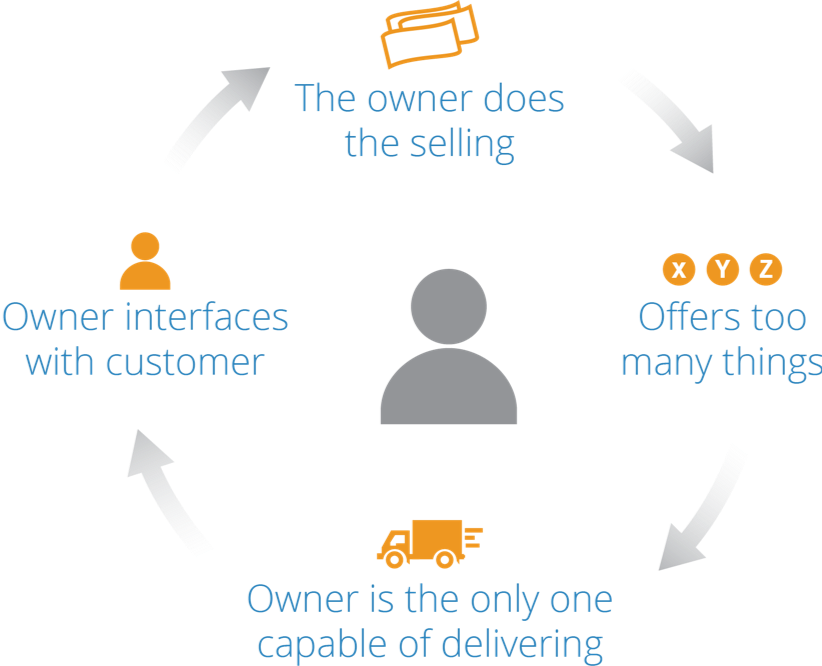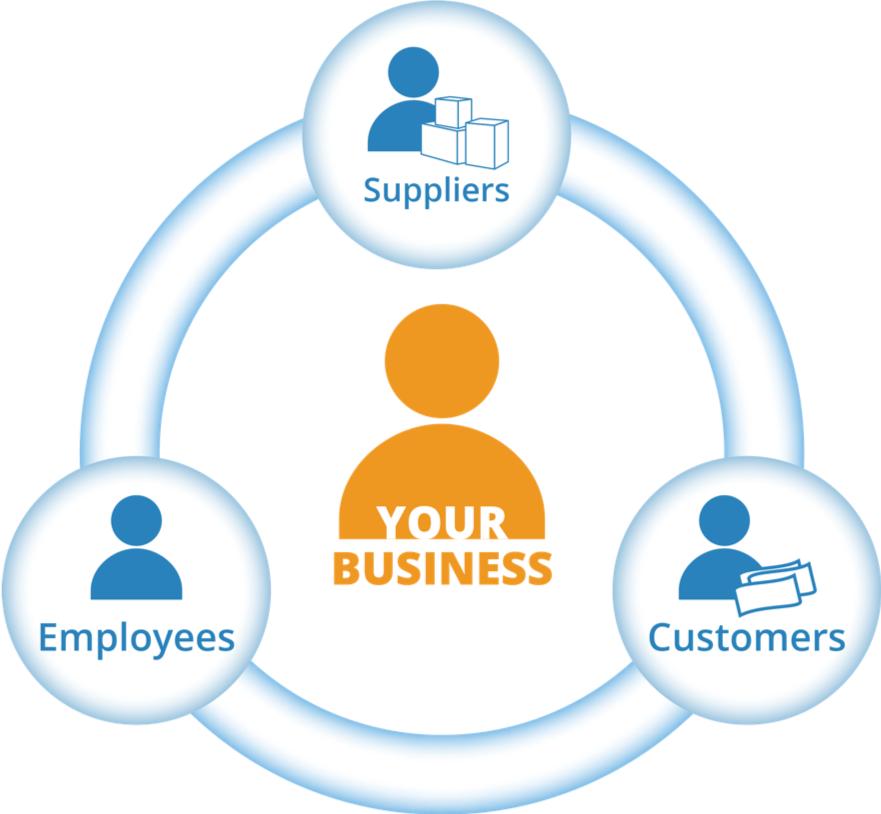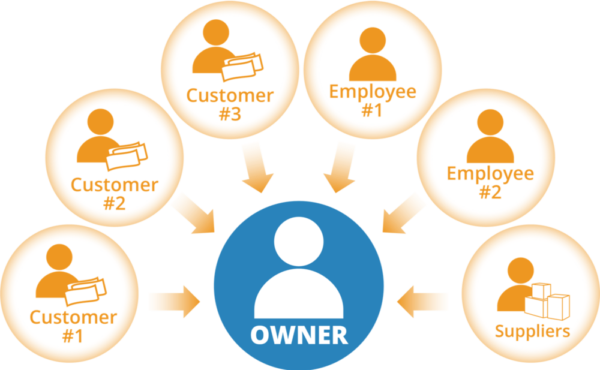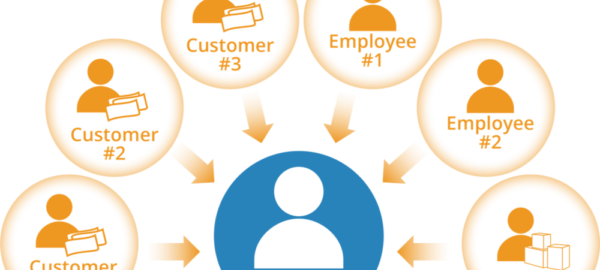— July 25, 2019
If you’re like me, you started your business for the freedom. The freedom that comes with running your own company. The freedom to earn what you deserve. The freedom to work for whoever you want, when you want, and from wherever you want.
But for many business owners, that dream remains elusive. Instead, they fall into the owner’s trap…

I felt trapped in my business because I knew more than anyone else about the company. Customers expected to deal with me personally; I was involved in creating and delivering most of what we sold; and, I was continually chasing the next deal. I was spinning so many plates, the last thing I felt was freedom.
I learnt that entrepreneurial freedom comes from building a thriving business — a valuable, sellable business.
A sellable business is not dependent on you. You can scale it, sell it, pass it down or run it without being involved in the day-to-day operations.
So, today, I want to share seven things you absolutely must to do to build a valuable business, and avoid the owner’s trap.
Number 1: Drive Financial Performance
Keep in mind, the goal is to build a sellable business — not necessarily because you want to sell it… but because owning a sellable business gives you the ultimate freedom. And when it comes to selling your business, financial buyers are after one thing: they are buying your future stream of profits.
To drive up profits, you have two big levers you can pull:
-
how much profit your company will make in the future
-
how reliable your estimates are
Number 2: Your Potential to Scale
The second factor that raises your company’s value is your potential to scale up and grow in the future.
Scaling up requires you to isolate a small set of products or services to sell that meet the Trifecta of Scale:
-
Teachable
-
Valuable
-
Repeatable
As entrepreneurs, we’re guilty of pursuing the next shiny thing or of being all things to all people. You might find yourself broadening the list of products and services you sell to customers. But selling lots of things to a few customers is a recipe for underperformance. In fact, the chances are, your business is more likely to become dependent on you. That’s because you are the only person in the company with enough knowledge to deliver such a broad range of products or services successfully.
So, the secret to scaling up is to sell less stuff to more people.
For example…
Most photographers run businesses that are highly dependent on them. Few have gone through the Scalability Trifecta exercise. However, The School Photography Company in Danbury England has.
All they do is school photographs and they’ve scaled up because focusing on one offering has allowed them to teach employees to deliver a repeatable service which customers value.
3. The Switzerland Structure
Creating a valuable business is called The Switzerland Structure. The name comes from the country which is obsessed by remaining independent.

Become obsessed with making sure your business is independent of any one customer, employee or supplier.
-
From a customer perspective, your goal should be that no one customer makes up more than 15% of your revenue.
-
Ideally, you should be able to switch any of your suppliers without significantly impacting your business
-
Probably the hardest part of The Switzerland Structure is to reduce your reliance on one or two key employees
Number 4: Cash Flow
The fourth attribute that drives your company’s value — and ultimately your freedom, is cashflow.
Cash flow is the lifeblood of any business. The more cash your business needs, the more likely it will need an infusion, the less it’s worth.
The opposite is also true: if your business generates cash as you grow, your business will be healthy and worth more to a buyer.
The reason is simple: when a buyer acquires your business, they have to write two checks: one to you, the owner, and a second check to your business to fund its “working capital”.
The money to write these two checks comes from the same pocket so the bigger the amount the acquirer needs to write for working capital, the smaller the check you’ll end up getting.
Not only does improving cash flow increase the value of your company, but it also makes it a lot less stressful to run.
Number 5: Recurring Revenue
I love Annual Recurring Revenue (ARR). Not only did it increase the value of my business, it helped me through some really tough times. Recurring revenue is why so many businesses are moving to subscription models.
As I mentioned, a buyer buys a future stream of profit, and therefore, the more reliable you can make your business model, the more valuable your company.
Here’s a simple example: home security businesses have two forms of revenue. Installation revenue they get from coming to install the system in your home. And “monitoring” revenue they collect each month for ensuring they come to the rescue in the event of a problem.
The industry-standard valuation for installation revenue is seventy-five cents for every dollar of installation revenue. For example, if you had a home security business generating one million dollars in revenue, and all you did was installations, your company would be worth seven hundred and fifty thousand dollars.
The same million-dollar business with one hundred percent monitoring revenue would be worth two million dollars because acquirers pay two dollars for every one dollar of monitoring revenue. The monitoring business is two and half times more valuable than the installation business.
And that’s why subscription billing is so important!
Number 6: Monopoly Control
The 6th factor that drives your company’s value is something I like to call “Monopoly Control” and it refers to how well differentiated your product or service offering is.
Your goal is to find three attributes or benefits of your product that makes it unique in the market. Doing this will give you more control over its pricing, which in turn gives you higher margins, and more money for marketing — allowing you to further differentiate your offering. Starting a virtuous cycle.
Take Panasonic’s entry into the crowded laptop market. When they entered, established brands already owned the attributes customers cared about. Apple was seen as sexy, HP was technically innovative, and Dell held the benefits of buying direct.
So if you’re Panasonic, all of the obvious market positions are already taken. If they had tried to compete directly with any of the incumbents, their only option would have been a lower price, which would have led to lower margins. They may have picked up some price-sensitive customers, but as soon as one of the big incumbents matched their price, Panasonic would have been nudged out of the market.
Instead, they asked themselves the two questions:
1. What do customers care most about
2. How differentiating would that benefit be if we offered it
Most laptop buyers cared about the things Apple, Dell and HP were offering. But there was a segment of the market that cared about something different. Police forces and military customers cared most about how tough their laptop was. They wanted something that could stand up to the rigours of the inside of a squad car or forward operating military theatre.
Panasonic launched the toughest laptop on the market. The ToughBook gave them a monopoly control in a niche market. Helping them reach higher margins and allowing them to market the unique benefits of the ToughBook. Cementing their brand as the laptop choice for people who operate in a rough and tumble environment.
Number 7: Satisfied Customers
Not surprisingly, having satisfied customers is an important ingredient of a valuable business. But having satisfied customers is actually not enough.
Your goal should be to have customers who are not only happy but also willing to re-purchase and refer you to their friends.
That is a much higher bar to reach – as Fred Reichheld discovered.
Reichheld is a Bain consultant, and creator of the Net Promoter System®. Early on, he discovered that there is virtually no relationship between a customer saying they are satisfied and the likelihood that they will either re-purchase or refer you. Many customers would say they were happy and then purchase from a competitor the very next day.
Reichheld worked the numbers and discovered one question which was predictive of both re-purchase and referral: on a scale of zero to ten, how likely are you to recommend us to a friend or colleague? Turns out, the answer to that question was highly predictive of both referral and re-purchase.
So, ask your customers how likely they are to recommend your business to a friend or colleague.
Number 8: The Hub & Spoke
The name comes from the airline ‘industry’s reliance on “”hub”” airports, which are efficient ways of moving planes around the globe — at least until a hub gets “”snowed in”” and the entire system breaks down.
Likewise, a Hub & Spoke manager controls their business with decisions centralized at the hub. Remove the hub, and the business grinds to a halt. Which is why companies reliant on their owner are either deeply discounted or worthless.

More importantly, Hub & Spoke businesses are stressful to run because you can never take a break — all the decisions, even the most mundane, are brought to you.
This is where distinguishing between how profitable your business and how valuable your business is can come in handy…
Some people use profitable and valuable interchangeably, but of course, they are often in conflict with one another:
Instead of hiring salespeople, the owner seeking to maximize her profits would do all of the selling herself. Instead of hiring a management team, the owner seeking profit would likely hire the lowest-paid staff they can find to get the job done.
While the profit-seeker may maximize their profits, they would also grow a worthless business. In contrast, the value-seeker surrounds herself with experts. People capable of getting the job done and growing a valuable business.
The ultimate goal of any business owner should be to build a valuable, sellable business because that removes you from the owner’s trap and gives you real freedom.
Business & Finance Articles on Business 2 Community
(71)





